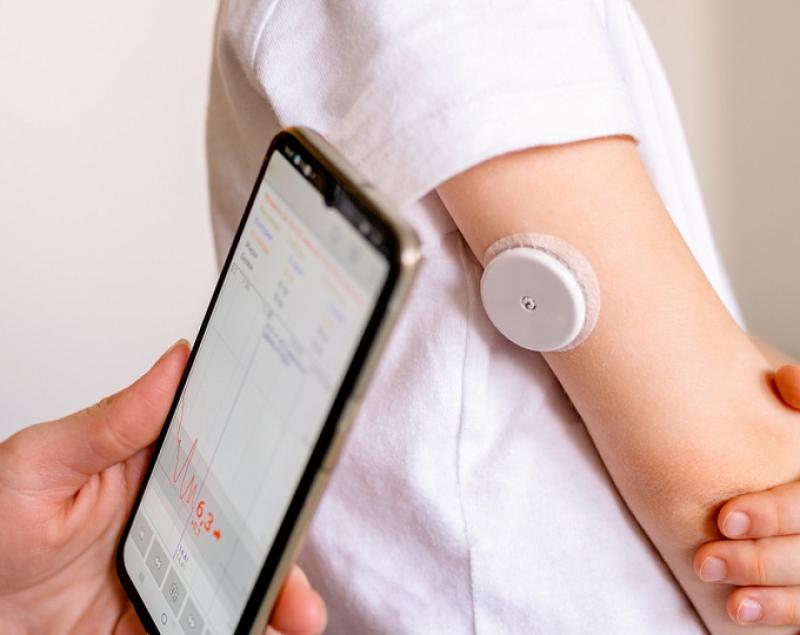Types of Diabetes Monitoring Devices
There are several types of diabetes monitoring devices available that help people with diabetes better manage their condition. The most common include:
Blood Glucose Meters
Blood glucose meters, also known as glucometers, are used to test blood sugar levels. A small blood sample is placed on a test strip which is inserted into the meter. The Diabetes Monitoring Devices then provides a blood glucose reading in minutes. This allows people to monitor their levels throughout the day and make dietary and treatment adjustments based on the results. Modern meters are small, portable devices that also store readings to help track trends over time.
Continuous Glucose Monitors
Continuous glucose monitors (CGMs) perform regular blood glucose checks automatically without the need for finger pricks. A small sensor inserted under the skin reads interstitial fluid glucose levels. The sensor is attached to a transmitter that sends readings to a receiver/monitor device or smartphone. CGMs provide near real-time readings as well as alerts if levels rise too high or drop too low. This makes them very helpful for managing diabetes throughout the day and night.
Insulin Pumps
Insulin pumps are devices that deliver insulin through a narrow tube placed under the skin. They are programmed to deliver rapid or slow release insulin continuously based on preset settings or on demand before meals. Insulin pumps mimic the way a healthy pancreas releases insulin and give people with diabetes greater flexibility with food intake and activities. The pumps can also be linked to continuous glucose monitors for automated insulin delivery based on readings.
Benefits of Monitoring Devices
Diabetes monitoring devices provide several important benefits compared to manual methods:
Convenience - Devices make testing more convenient as readings can be taken discreetly throughout the day without needles or lancets. Continuous monitors provide non-stop readings.
Accuracy - Meter readings eliminate human error in calculations or inaccurate estimation. CGMs provide a more comprehensive picture of glucose fluctuations.
Insulin Adjustments - Readings allow adjustments to insulin doses, diet, exercise based on how food and activities impact levels individually. This improves control.
Patterns & Trends - Stored data reveals patterns like time of day levels tend to rise or fall. This identifies triggers and helps prevent extreme incidents.
Reduce Complications - Tighter control through frequent monitoring helps lower an individual's risk of long-term complications like eye, nerve or kidney damage over time.
Lifestyle Flexibility - Continuous monitoring and insulin pumps provide flexibility to adjust insulin therapy based on readings rather than timing of when levels are manually tested. This supports an active lifestyle.
Peace of Mind - Alerts for highs and lows prompt treatment before emergencies occur. Monitoring throughout the day and night brings reassurance that levels are stable even when asleep.
Improving Technology
Technology continues to drive advances in monitoring devices. Meters are getting smaller, more accurate and able to store more readings. Continuous monitors are minimally invasive, water resistant and can directly transmit readings to smartphones. Insulin pumps are becoming more automated with loop systems linking to CGMs to adjust insulin dosing accordingly. Some future artificial pancreas systems mayautomate all aspects of monitoring and treatment for maximum convenience and control.
such improvements benefit people with diabetes through better control and quality of life. Easy to use monitoring makes following a treatment plan less of a chore. As technology evolves further it is likely diabetes care will continue shifting away from multiple daily finger pricks towards discreet and seamless monitoring integrated in everyday life. Overall, these remarkable devices have become an indispensable tool supporting individuals managing their condition effectively.
For Deeper Insights, Find the Report in the Language that You want:
About Author:
Money Singh is a seasoned content writer with over four years of experience in the market research sector. Her expertise spans various industries, including food and beverages, biotechnology, chemical and materials, defense and aerospace, consumer goods, etc. (https://www.linkedin.com/in/money-singh-590844163)
